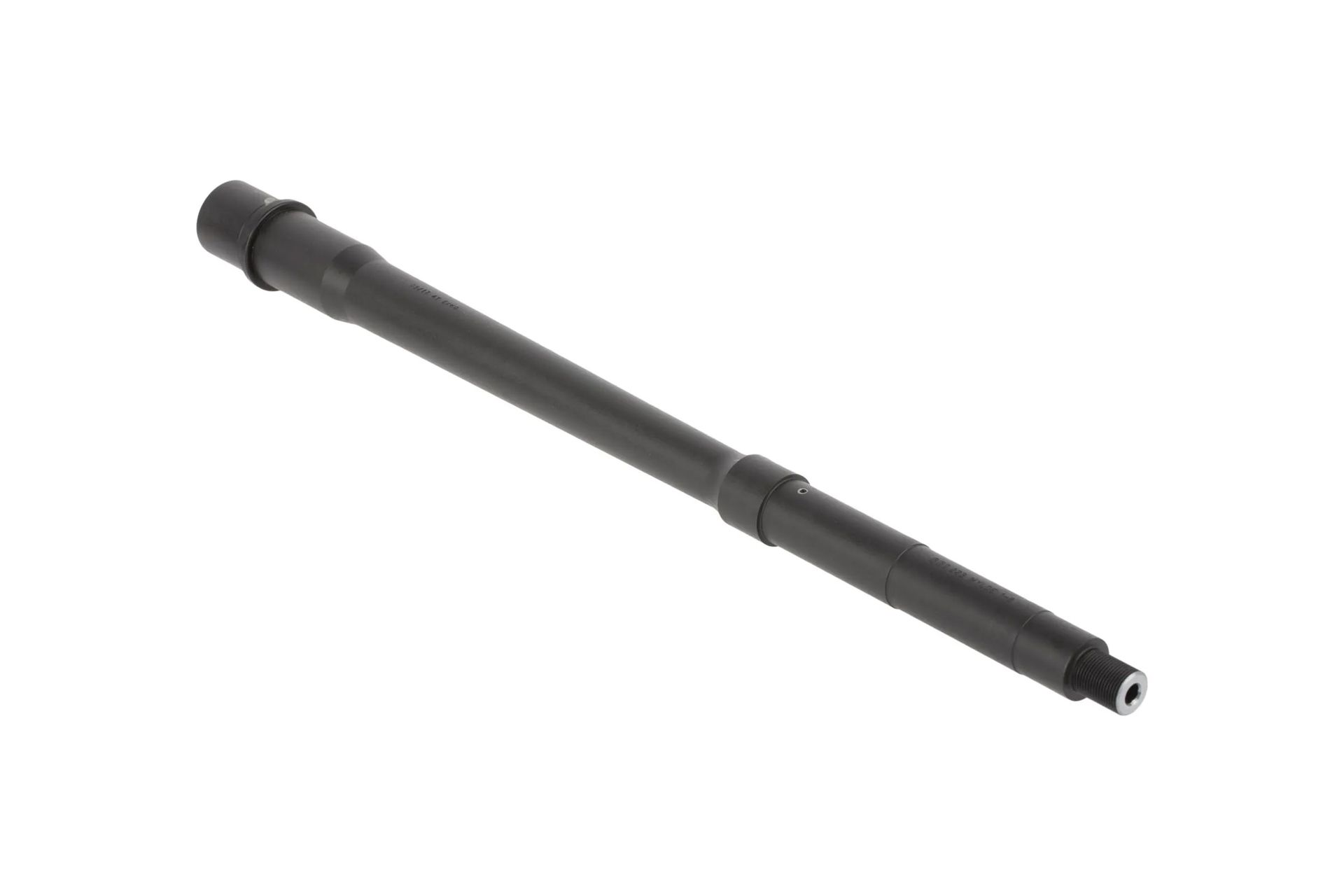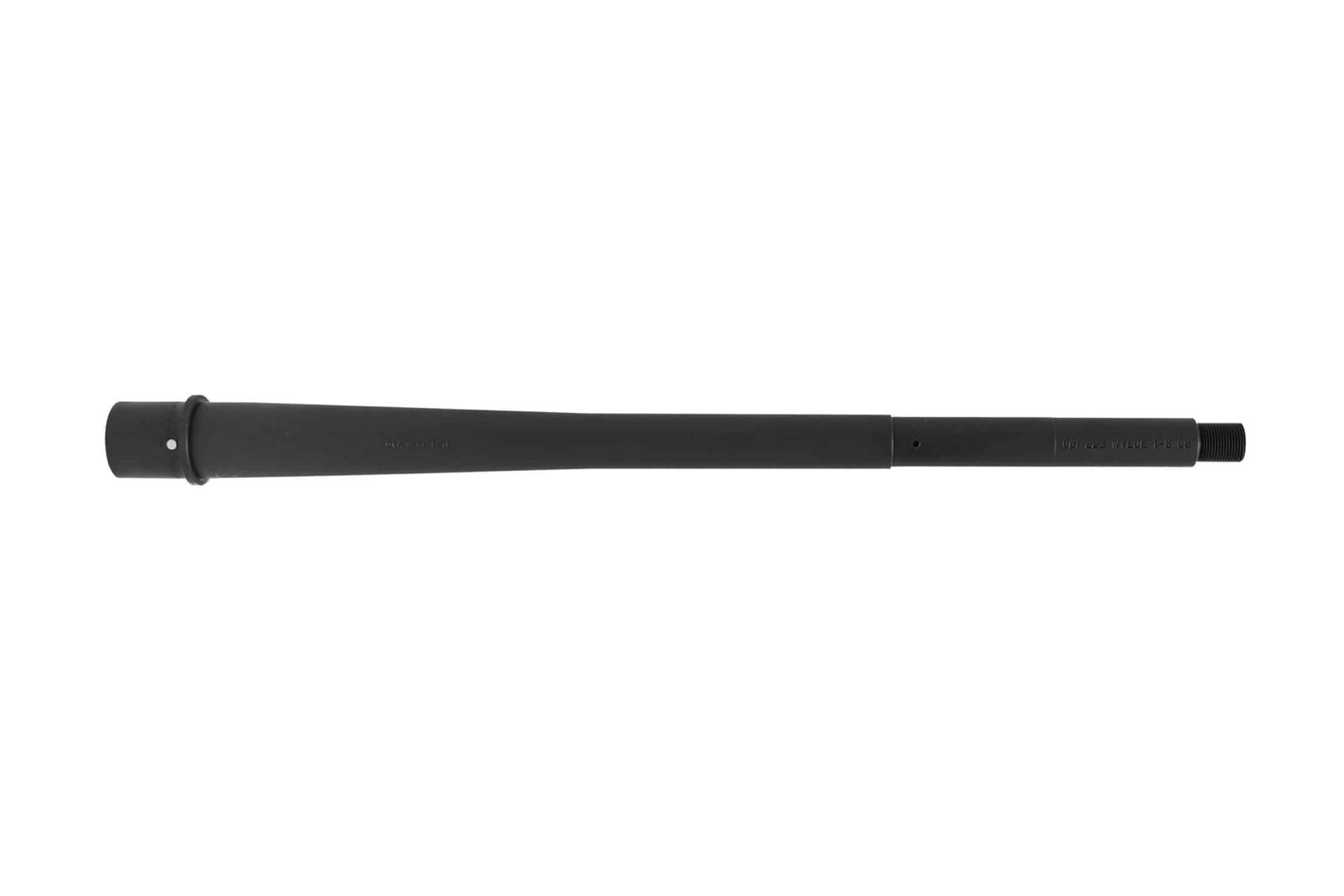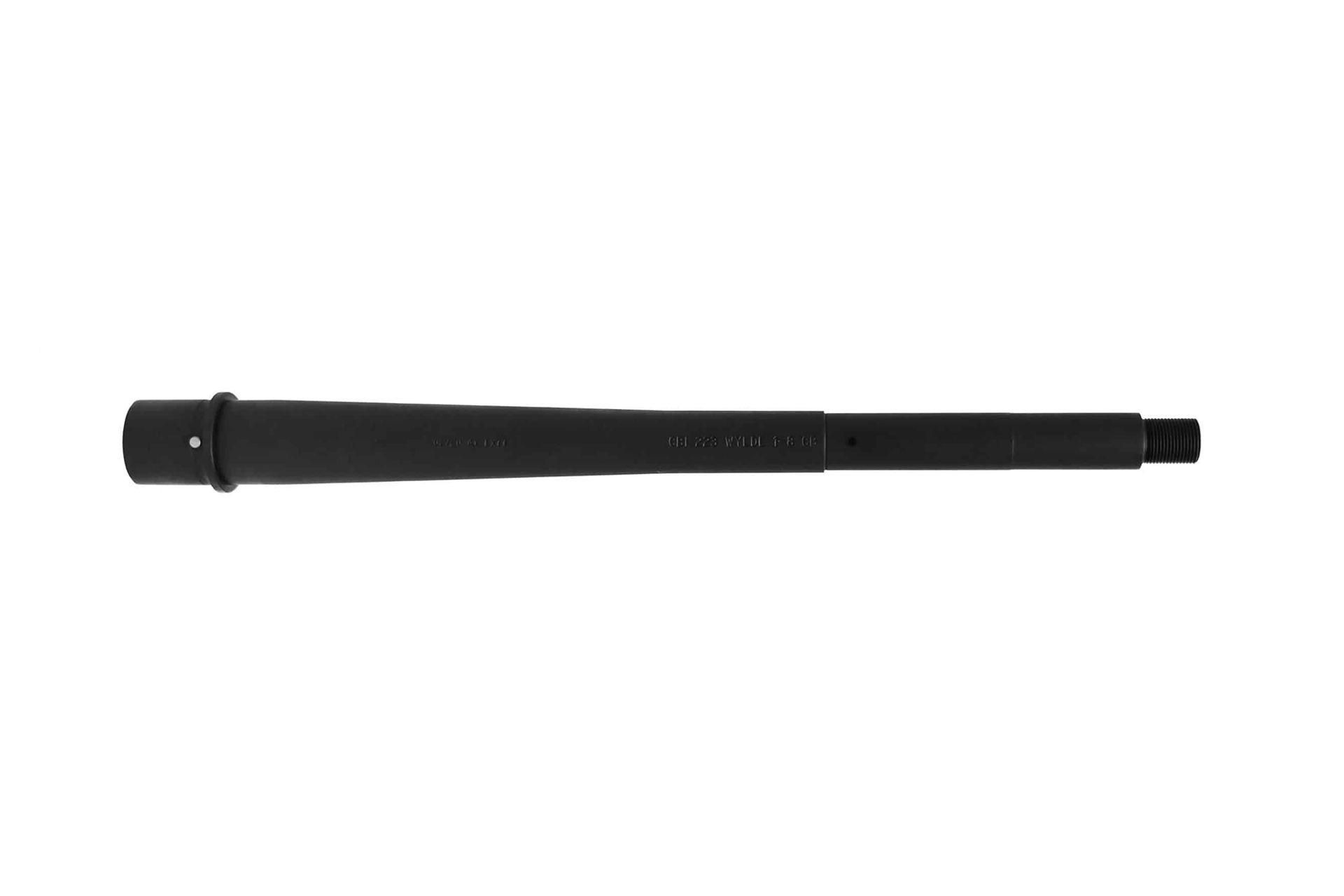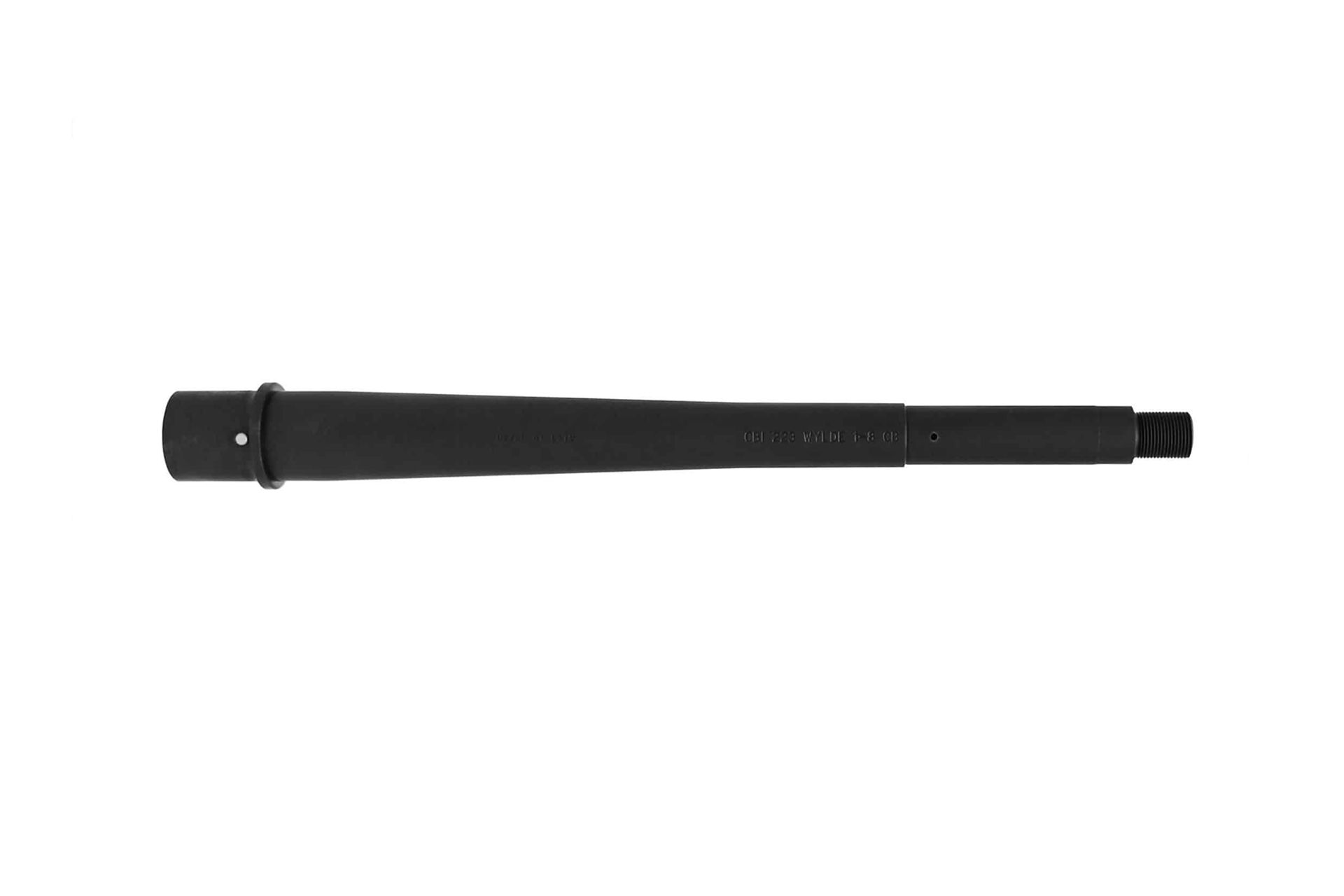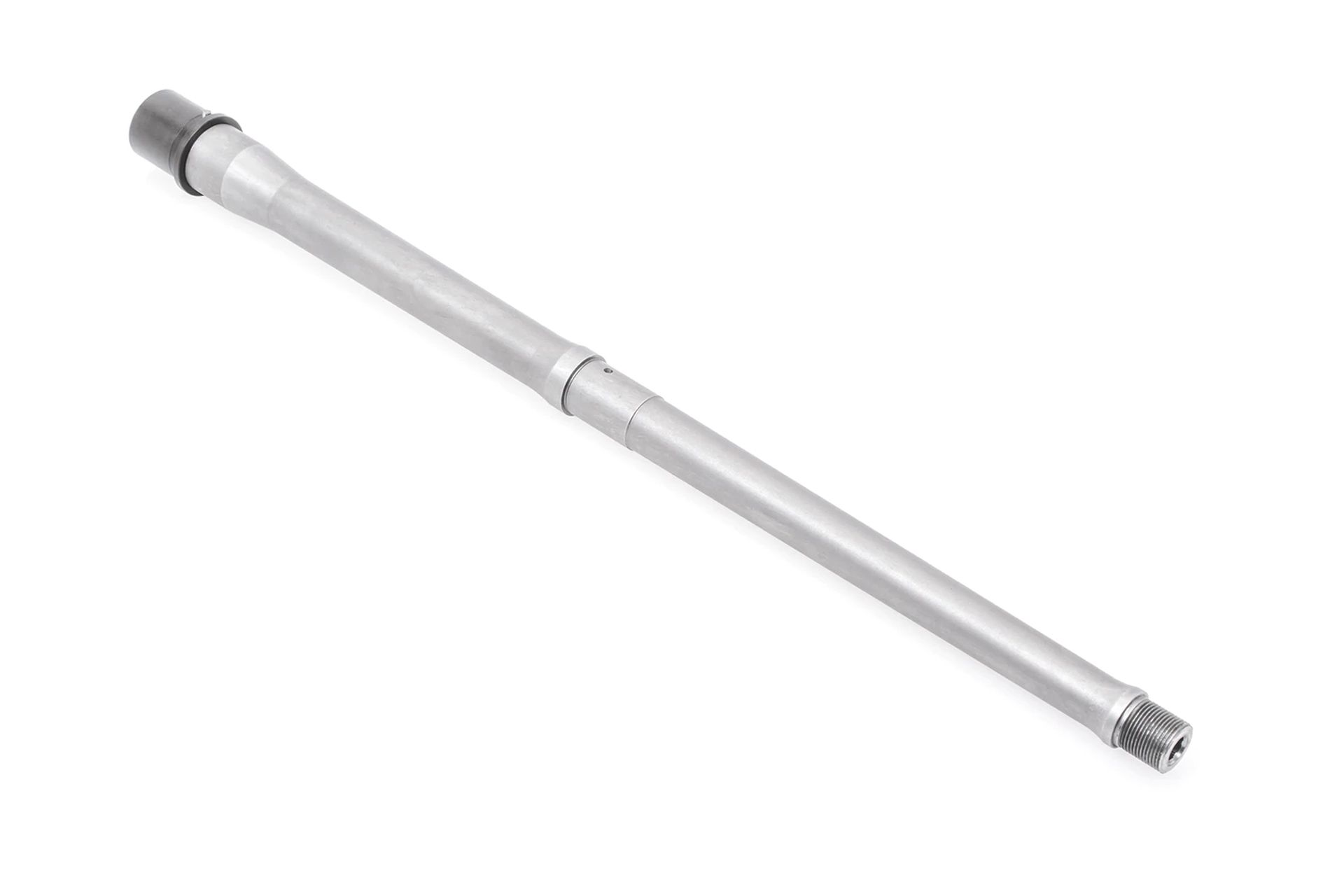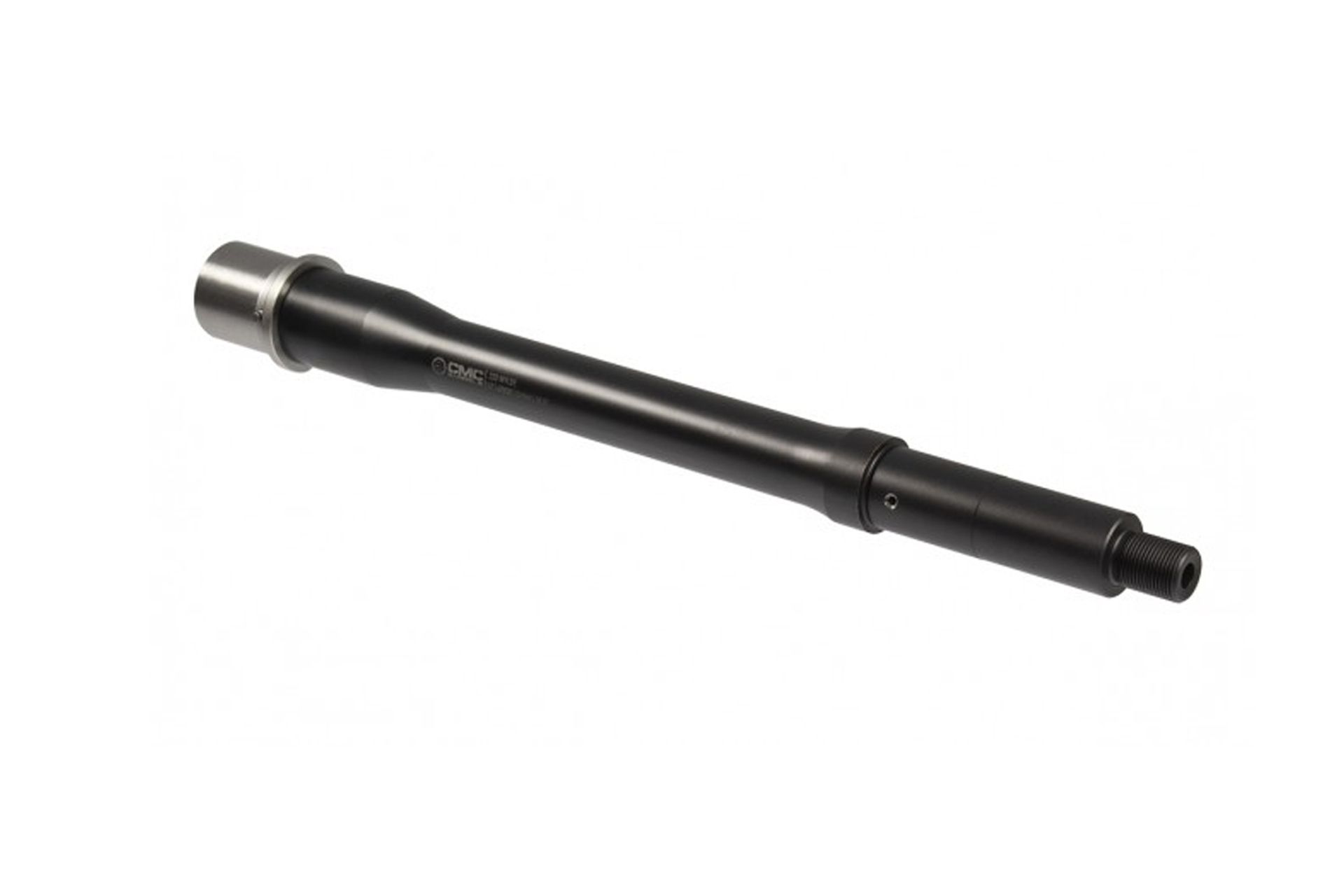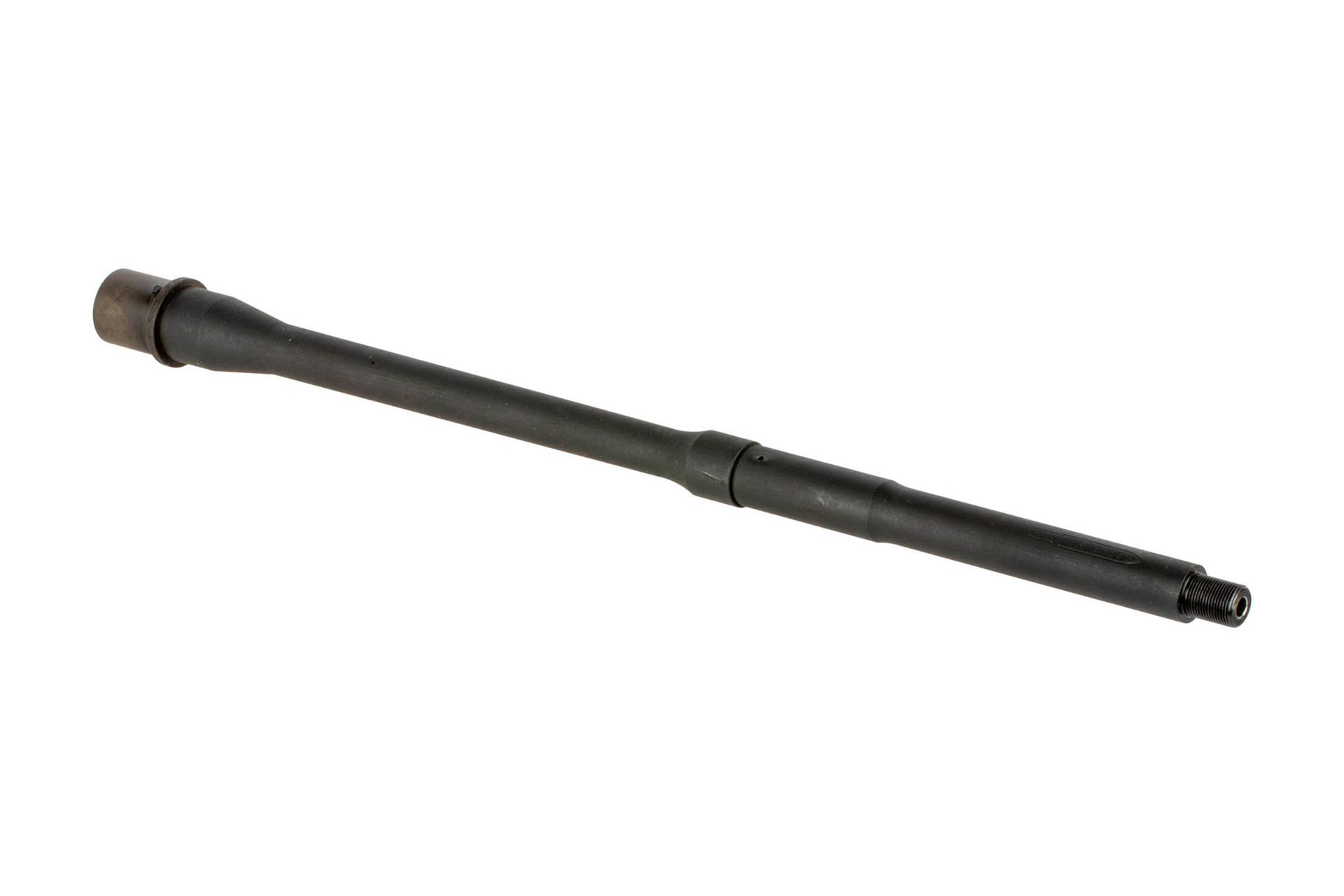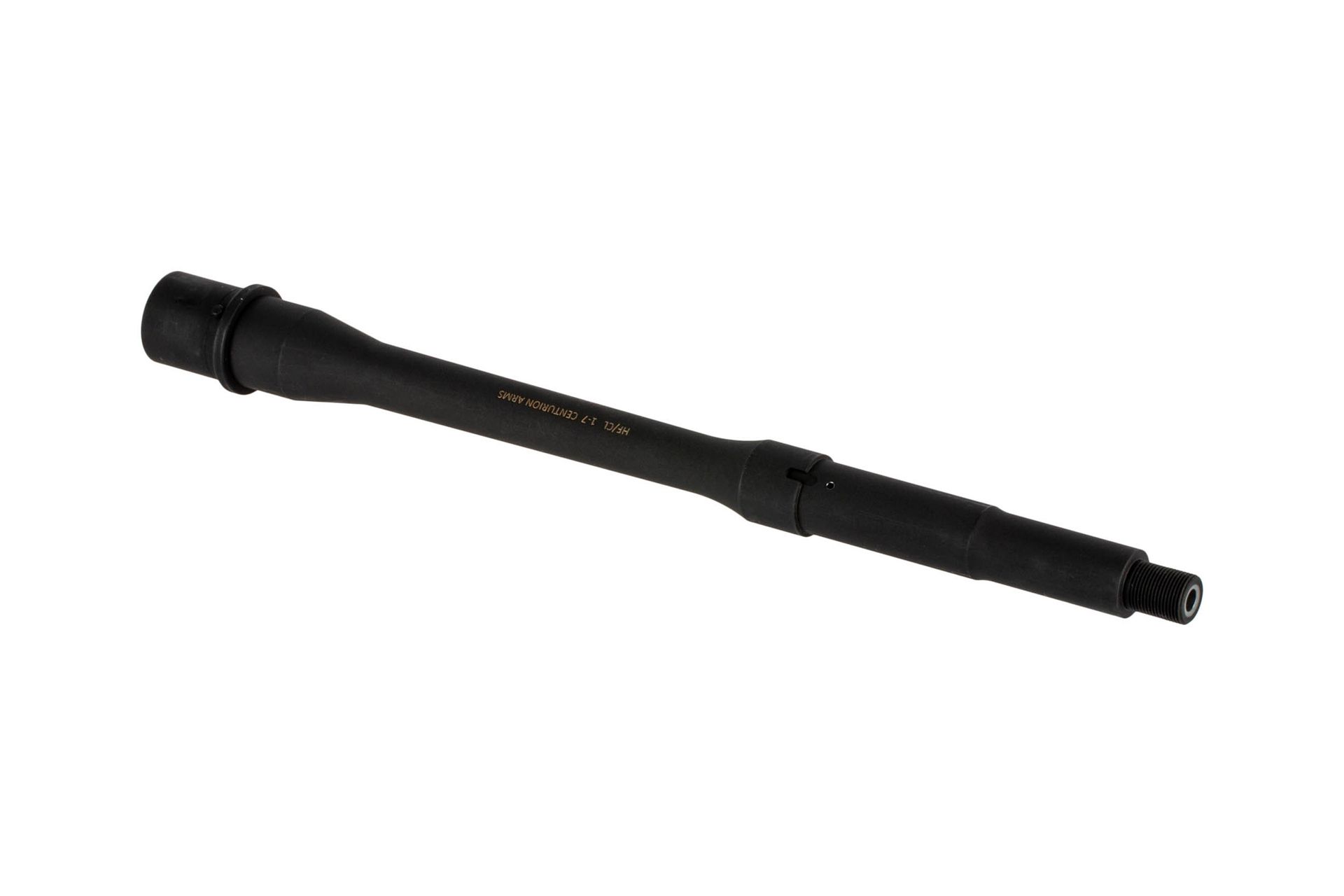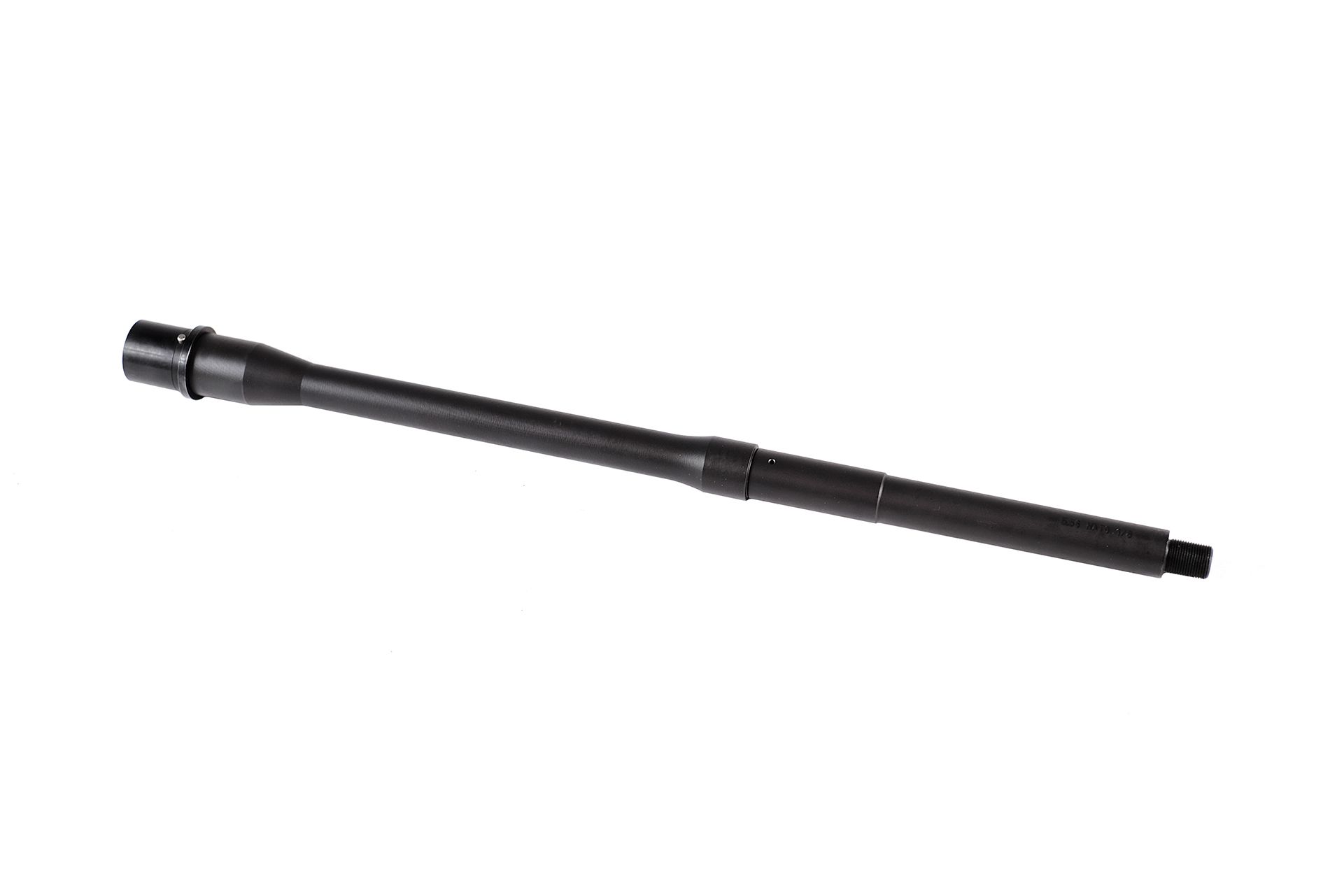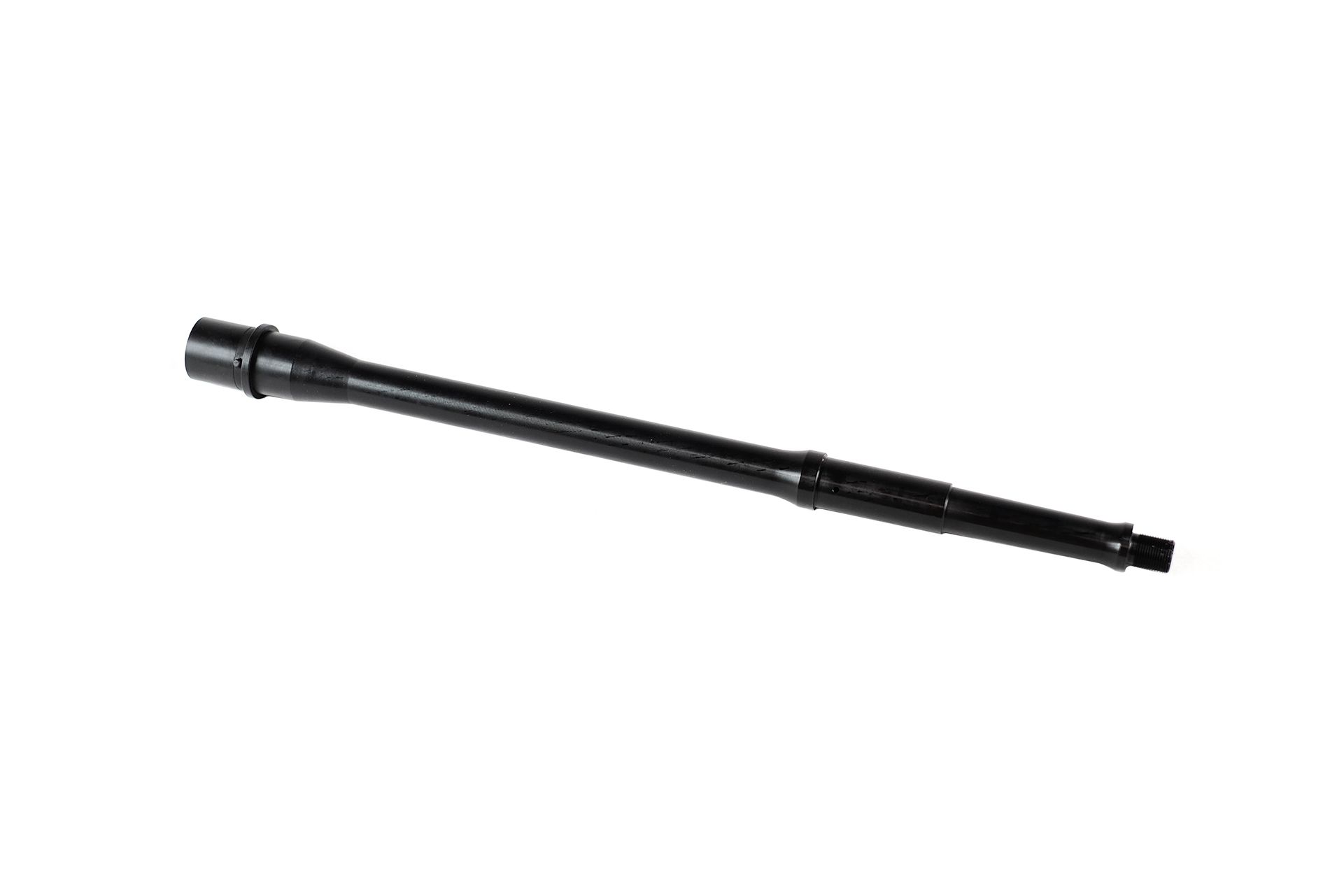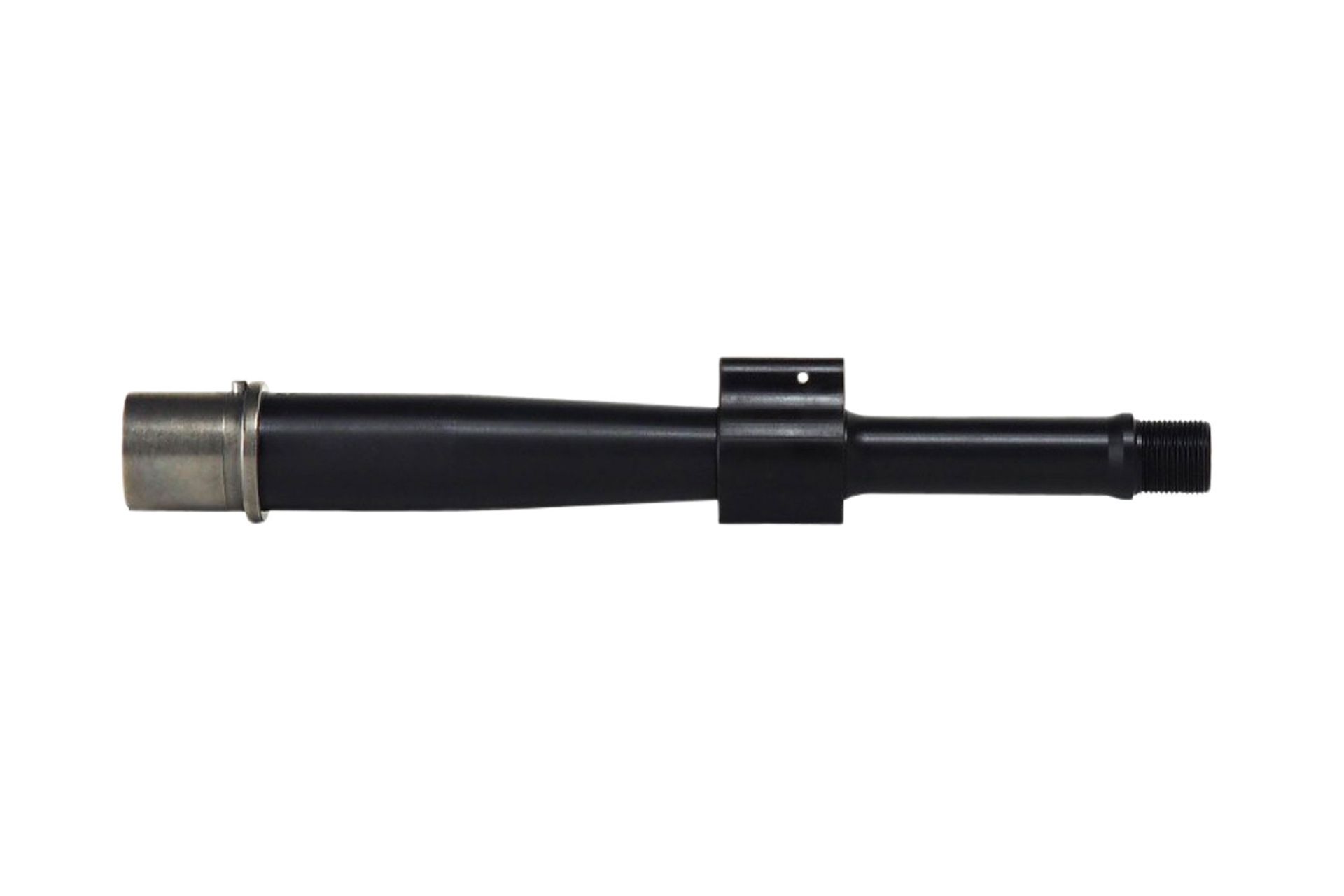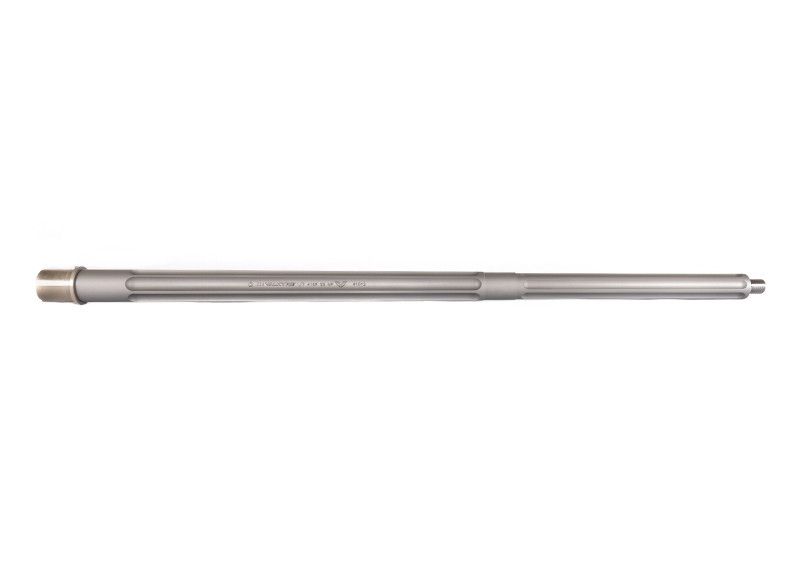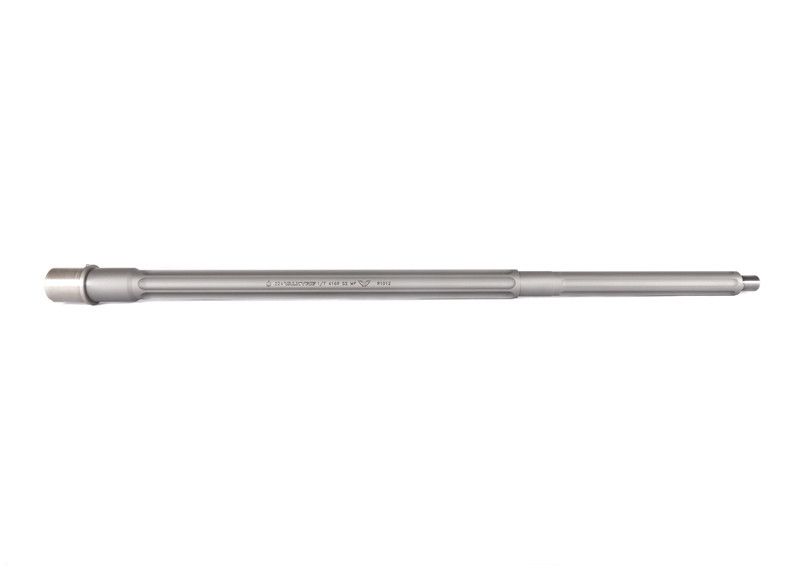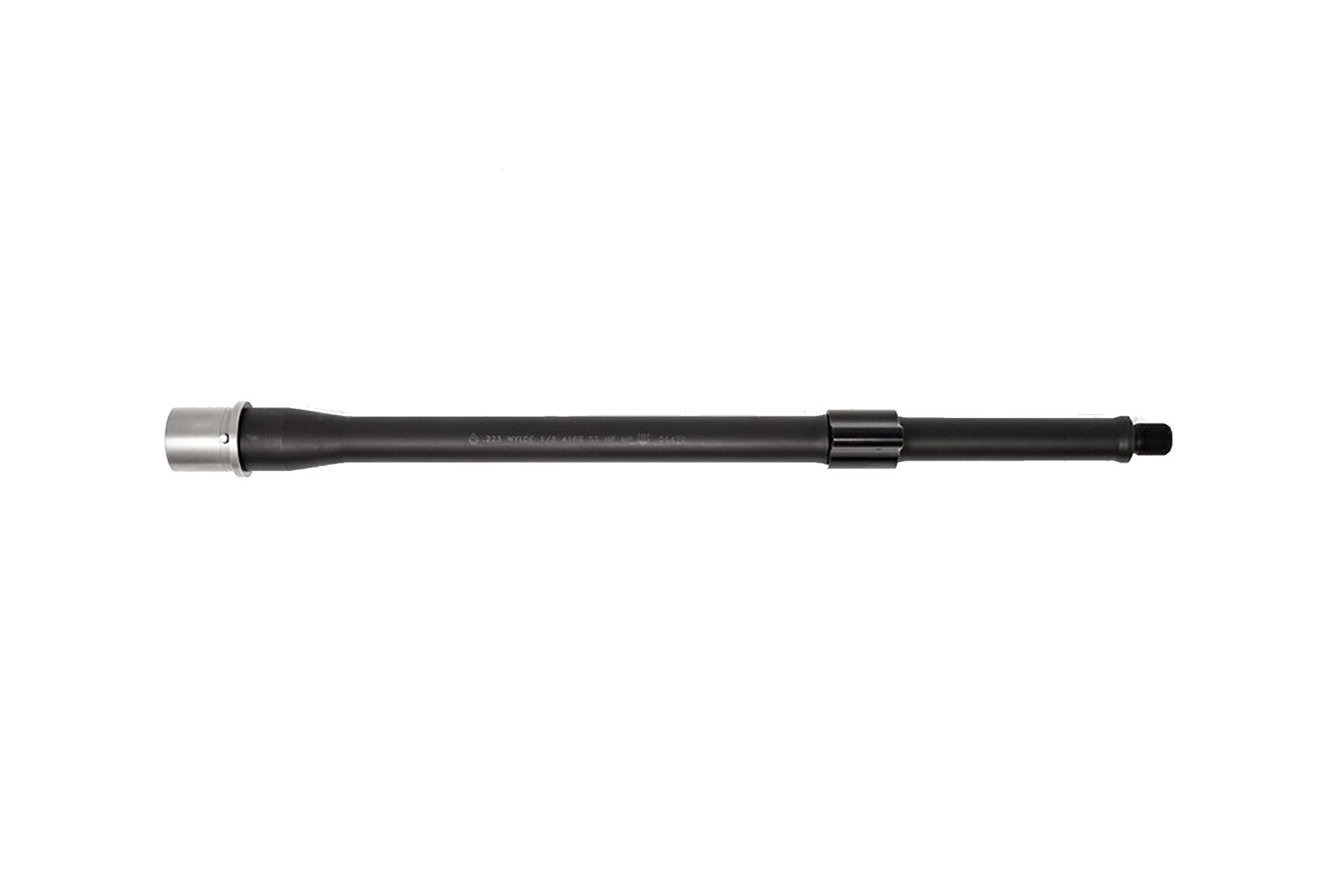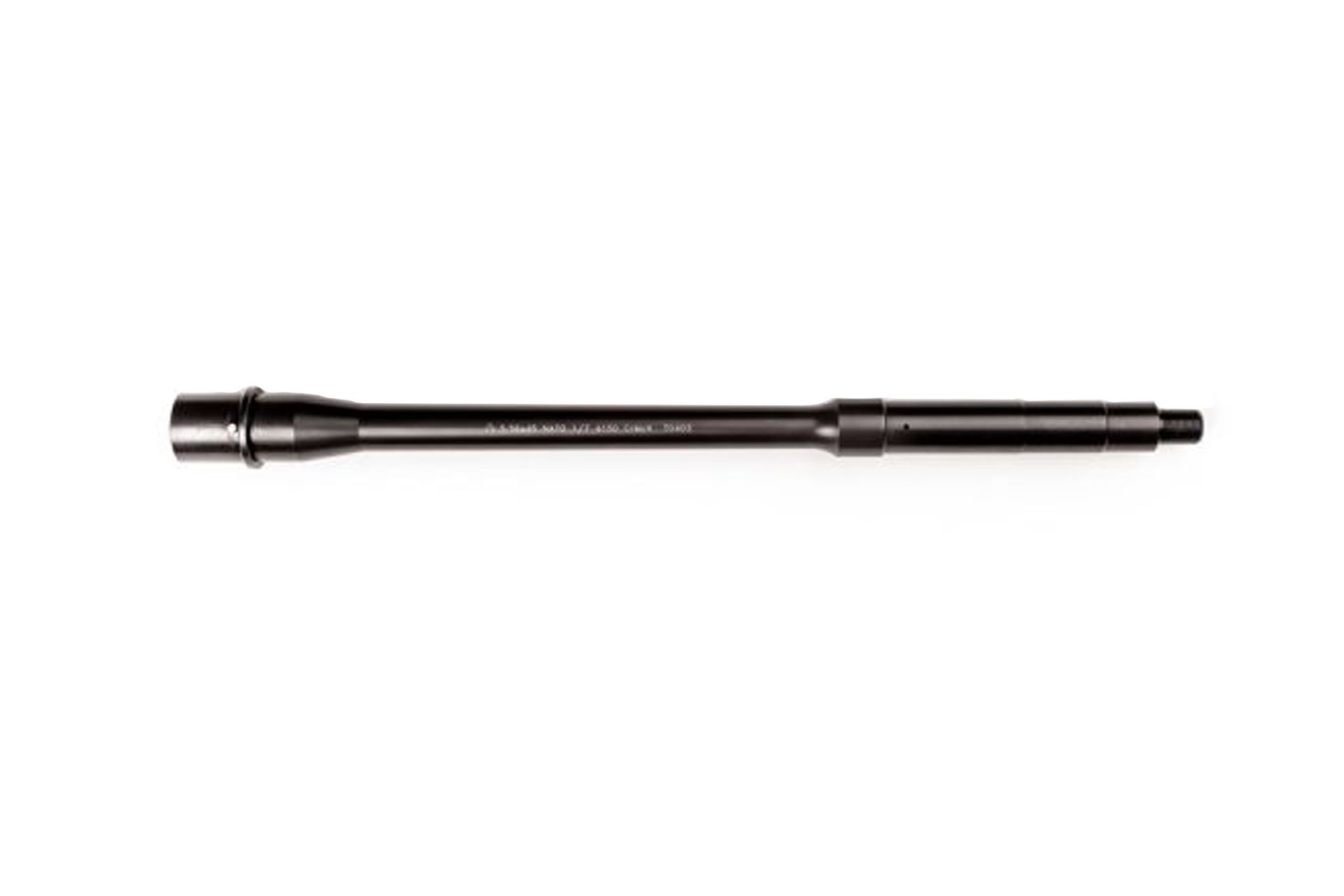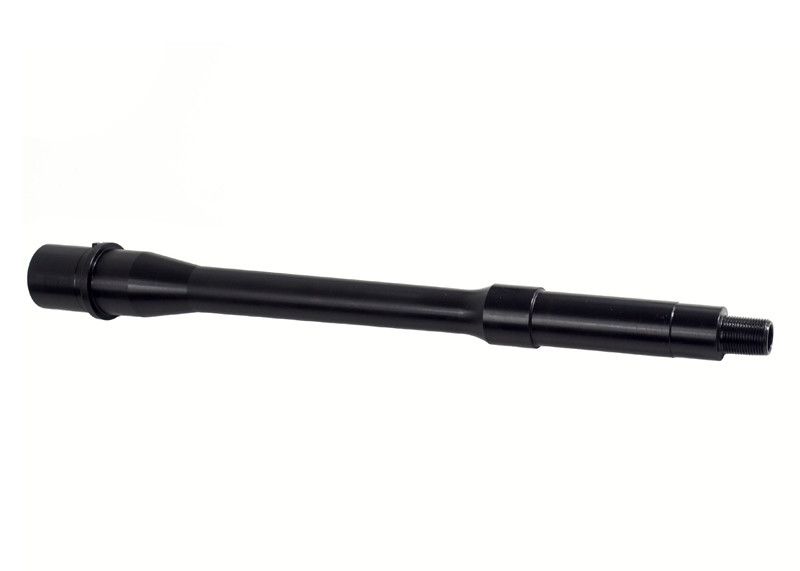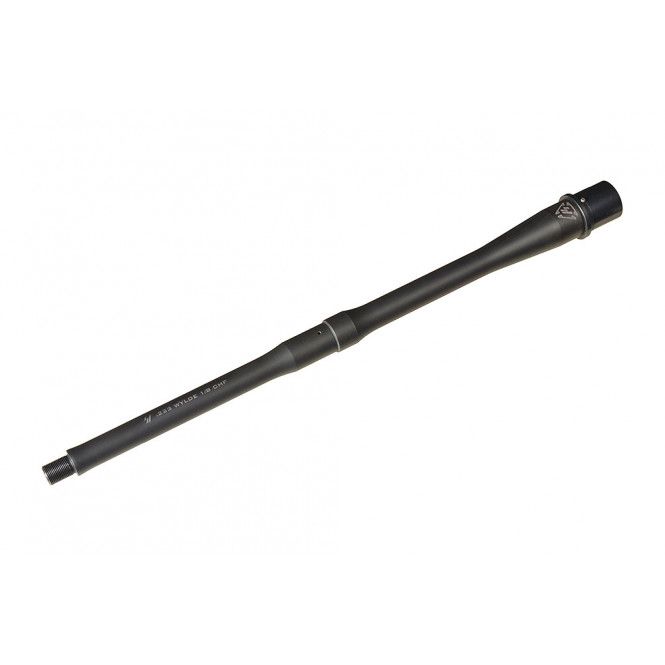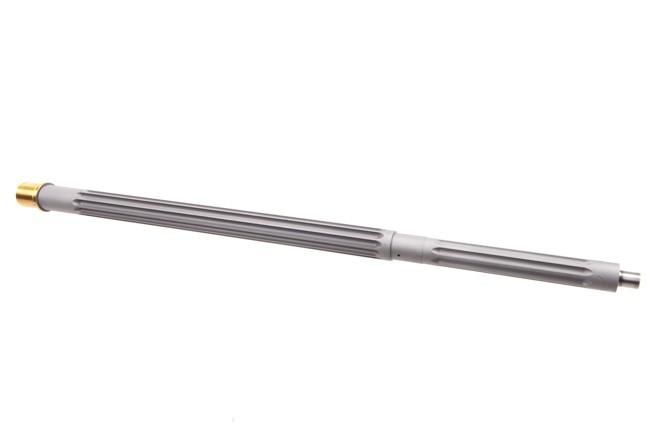To accommodate varying shooting needs, we stock barrels with multiple twist rates. This selection ensures that whether you’re shooting lightweight varmint rounds or heavy match-grade ammunition, there’s a barrel that optimally stabilizes your chosen bullet weight. We understand that each shooter has unique requirements, so we maintain options for a range of twist rates to suit different preferences.
Material and surface treatment are also critical to barrel performance and longevity. Our selection includes chrome-lined barrels for outstanding durability and corrosion resistance, making them ideal for high-volume shooters and harsh conditions. Nitrided barrels offer a balance of accuracy and lifespan at a competitive price point, while stainless steel barrels provide match-grade accuracy for precision builds.
When you choose a barrel from Dirty Bird Guns and Ammo, you’re making a smart, reliable choice. We work with manufacturers who have a proven track record for quality and consistency, so you know you’re getting dependable performance without any unnecessary frills.
Our range of barrel profiles and lengths caters to a variety of shooting applications. Shorter barrels are well-suited for close-quarters engagements, delivering maneuverability and reliability. Mid-length barrels strike a balance between handling and ballistic performance, while longer barrels maximize velocity, perfect for competition and precision applications. Each profile, from lightweight to heavy contour, is designed to meet specific shooting needs without compromise.
Explore our selection below to find the right barrel for your build. Whether you’re assembling a duty rifle, competition gun, or a reliable range companion, we have options that deliver the performance you need at a fair price. The Dirty Bird Guns and Ammo team is here to help – reach out with any questions about specific models or applications.
Frequently Asked Questions about AR-15 Barrels (FAQ):
- How do I clean an AR-15 barrel?
We don’t clean after every range visit, but every once and a while it will be in your best interest to pay some attention to your barrel. Proper barrel cleaning requires a methodical approach using the right tools and materials. Begin by ensuring the firearm is unloaded and separated from the upper receiver. Using a quality bore snake, make several passes to remove loose debris. Next, apply a copper solvent to address fouling, allowing it to dwell according to manufacturer specifications. Follow with a properly sized bronze brush to scrub the bore, then run clean patches until they emerge without discoloration. Finish by applying a light coat of quality gun oil to prevent corrosion. - How do I change or remove an AR-15 barrel?
While your current barrel should last you thousands of rounds, there may come a time when you want to swap out your old barrel with a new one. Changing an AR-15 barrel requires specific tools, including an action block, torque wrench, and barrel nut wrench. Begin by securing the upper receiver in a vise using the action block. Remove the gas block and handguard. Using the barrel nut wrench, loosen and remove the barrel nut. The barrel assembly can then be removed from the upper receiver. Installation reverses this process, with special attention paid to proper torque specifications (typically 30-80 ft-lbs) and gas tube alignment. - How many rounds will an AR-15 barrel last?
Shooting out an AR-15 barrel is an expensive endeavor, as the amount of ammo required to do so would cost you thousands of dollars. Barrel life varies significantly based on construction and use patterns. Chrome-lined barrels typically maintain accuracy and performance for 15,000-20,000 rounds under normal conditions. Nitrided barrels often see 10,000-15,000 rounds of effective life. These numbers can decrease significantly with high volumes of rapid-fire or poor maintenance practices. Match-grade stainless steel barrels may show accuracy degradation earlier, sometimes around 5,000 rounds, particularly under intense use. - How do I measure AR-15 barrel length?
Proper barrel length measurement must be done from the closed bolt face to the end of the barrel, not including any removable muzzle devices. For attached muzzle devices, only permanent attachments (pinned and welded) count toward the legal barrel length. The measurement must be taken along the barrel’s centerline, using a rod inserted from the chamber to the muzzle for accurate results. - What is the legal barrel length for an AR-15?
Federal law requires a minimum barrel length of 16 inches for rifles unless registered as a Short Barreled Rifle (SBR) under the National Firearms Act. This length can be achieved through a permanently attached muzzle device, provided the total fixed length meets or exceeds 16 inches. State and local regulations may impose additional restrictions. - What is the shortest barrel allowed on an AR-15 pistol?
The shortest we prefer is an 8” 300 Blackout. That said, AR-15 pistols have no federal minimum barrel length requirement. However, practical considerations typically limit the minimum length to around 7.5 inches for 5.56 NATO, primarily due to reliability and ballistic performance. Shorter barrels work better with cartridges designed for brief dwell times, such as .300 Blackout, which can function reliably with barrels as short as 5 inches. - How do I assemble an AR-15 barrel?
Assembling an AR-15 barrel requires careful attention to detail and proper tools. Ensure the barrel extension is properly installed and torqued. Lubricate the barrel extension and receiver threads. Insert the barrel into the upper receiver, install the barrel nut, and torque to manufacturer specifications (typically 30-80 ft-lbs). Align the gas tube with the gas port. Install the gas block and secure it properly. Finally, install and time any muzzle devices according to manufacturer specifications. For precision builds, consider using a barrel nut alignment tool and proper torque wrench to ensure optimal alignment and accuracy.
Buying AR-15 Barrels Online
How to choose the right AR-15 Barrel
AR-15 barrels are critical to your rifle’s performance, affecting everything from accuracy to handling. Whether building a new rifle or upgrading your current setup, selecting the right barrel is crucial for optimizing your shooting experience. This guide will walk you through the essential factors to consider when choosing an AR-15 barrel, such as length, material, twist rate, gas system length, and profile. Understanding these elements will help you select the best AR-15 barrel for your specific needs, whether for precision shooting, home defense, or recreational use.
What is an AR-15 Barrel?
The AR-15 barrel is one of the most critical components of your rifle, as it directly impacts accuracy, range, and overall performance. It serves as the path for the bullet to travel after firing, and its length, material, and internal features, like rifling, significantly affect its performance.
AR-15 barrels come in different lengths and materials, and understanding these options will help you make an informed decision that matche your specific needs, whether you’re building for home defense, target shooting, or long-range precision.
Key Factors to Consider When Buying an AR-15 Barrel
When selecting an AR-15 barrel, several factors will affect how your rifle handles and shoots. Here are the most important considerations:
Barrel Length
The length of your AR-15 barrel is crucial in determining accuracy and maneuverability. The right length is essential for optimizing your rifle based on its intended use. Here’s a detailed look at the most common AR-15-barrel lengths and their advantages:
- Short Barrels (7.5″ – 11.5″): Best suited for close-quarter combat (CQB) and home defense, short barrels are lightweight and easy to handle in tight spaces. While they offer superior maneuverability, they sacrifice accuracy and velocity at longer distances, making them less effective for long-range shooting.
- Mid-Length Barrels (12.5″ – 16″): Mid-length barrels, especially the popular 16-inch option, strike a balance between portability and accuracy. These barrels are versatile enough for a wide range of applications, from home defense to recreational shooting, making them an ideal choice for most AR-15 builds. They offer better accuracy than shorter barrels without being too cumbersome.
- Long Barrels (18″ – 24″): Designed for precision and long-range shooting, long barrels provide enhanced accuracy and velocity. They excel at hitting targets at extended distances but are heavier and less maneuverable. Long barrels are ideal for competitive shooters, hunters, or marksmen focusing on accuracy over portability.
When choosing a barrel length, consider how you plan to use your rifle. Shorter barrels are perfect for tactical or home defense situations, while mid- and long-length barrels are better suited for all-around use and long-range accuracy.
Barrel Material
The material of your AR-15 barrel plays a significant role in its durability, accuracy, and overall performance. Choosing the right material is essential for matching your rifle’s purpose and ensuring it can handle the conditions you’ll be using it in. Below are the most common barrel materials and their advantages:
- Chrome Moly Vanadium (CMV): CMV barrels are a highly durable and reliable choice for general-purpose shooting. This material is known for its ability to withstand high heat and pressure, making it a great option for extended shooting sessions. CMV barrels are widely used for their strength and longevity, providing a solid balance between performance and cost.
- Stainless Steel: Stainless steel barrels are prized for their superior accuracy, making them ideal for long-range shooting and precision builds. These barrels are excellent for shooters focused on precision and consistency. However, they can wear out faster under high-volume or rapid-fire shooting, as stainless steel tends to erode more quickly than other materials under intense use.
- Cold Hammer Forged (CHF): Cold hammer forged barrels are a premium option known for their exceptional durability and longevity. The CHF process strengthens the metal, resulting in a barrel that can withstand more rounds while maintaining consistent performance. These barrels are highly reliable under heavy use and ideal for serious shooters or military applications where barrel life and resilience are critical.
When selecting a barrel material, consider your intended use and shooting frequency. CMV offers a balance of durability and cost-effectiveness, stainless steel maximizes accuracy, and CHF is perfect for those seeking long-lasting reliability under heavy use.
Twist Rate
Twist rate refers to how many inches it takes for the rifling inside the barrel to make one full rotation. The twist rate plays a critical role in stabilizing the bullet as it travels down the barrel, impacting accuracy and performance with different bullet weights. Here are the most common twist rates and their ideal uses:
- 1:7 Twist: This twist rate is optimal for stabilizing heavier bullets, typically ranging from 62 to 77 grains. It’s ideal for long-range shooting, where heavier bullets provide better stability and wind resistance. A 1:7 twist is commonly used in tactical and precision rifles designed for accuracy at extended distances.
- 1:8 Twist: Known for its versatility, the 1:8 twist rate can effectively stabilize a broad range of bullet weights, from 55 to 77 grains. This makes it a great all-around option for those who use various types of ammunition, providing a balance between short-range and long-range shooting performance.
- 1:9 Twist: The 1:9 twist rate is best suited for lighter bullets, typically between 55 and 62 grains. It’s often used in general-purpose rifles and budget-friendly builds, as lighter bullets are more affordable and widely available. This twist rate provides reliable accuracy for most recreational and general shooting activities.
When selecting a twist rate for your AR-15, consider the type of ammunition you plan to use and the shooting distances you intend to cover. A 1:7 twist is ideal for heavy, long-range rounds, a 1:8 twist offers flexibility, and a 1:9 twist is perfect for lighter bullets in general-use scenarios.
Barrel Profile
The barrel profile refers to the thickness and contour of the barrel, which impacts the rifle’s weight, heat resistance, and overall handling. The profile you choose will depend on your shooting style and preferences. Here are the most common AR-15 barrel profiles and their key features:
- Government Profile: The government profile is a standard option that offers a good balance between weight and durability. Originally designed for military-style AR-15s, this profile is thicker near the chamber for added strength but tapers down toward the muzzle. It provides reliable heat dissipation and is versatile enough for most general shooting purposes, from target practice to tactical use.
- Heavy (HBAR) Profile: The heavy barrel, or HBAR, is designed for increased accuracy and better heat resistance. Its thicker contour helps reduce barrel flex and enhances precision, especially during sustained fire. This profile is ideal for precision shooting and situations where maximum accuracy is required. However, the added weight can make the rifle heavier to carry and less maneuverable.
- Pencil Profile: The pencil profile is a thin, lightweight option designed to minimize the overall weight of the rifle. This profile is excellent for shooters looking for easy handling and portability, making it popular for those who prioritize mobility, such as in home defense or tactical situations. While pencil barrels are light and easy to carry, they may heat up more quickly during rapid-fire sessions compared to heavier profiles.
When choosing a barrel profile, consider how you will use your AR-15. The government profile balances weight and durability, the HBAR excels in accuracy and heat management, and the pencil profile is perfect for those who want a lightweight, easily maneuverable rifle.
Gas System Length
The gas system works in tandem with the barrel to cycle the rifle. The right gas system depends on the barrel length:
- Pistol Length: Best for short barrels (7.5″ – 10.5″), often used in AR-15 pistols or short-barreled rifles.
- Carbine Length: Ideal for 10.5″ – 16″ barrels, providing a good balance between reliability and recoil control.
- Mid-Length: Best for 14.5″ – 16″ barrels, offering smoother recoil and more reliable cycling than a carbine-length system.
- Rifle Length: Designed for barrels 18″ or longer, providing the smoothest recoil and reliability, perfect for precision shooting.
Types of AR-15 Barrels
- Chrome-Lined Barrels
Chrome-lining provides increased durability and corrosion resistance, making it ideal for high-volume shooters or those using the rifle in harsh conditions. The downside is that chrome-lining can slightly reduce accuracy. - Nitride-Treated Barrels
Nitride-treated barrels offer durability similar to chrome-lining but without the potential accuracy loss. They are a great option for those seeking a balance between longevity and performance. - Stainless Steel Barrels
Stainless steel barrels are known for their accuracy, making them a popular choice for competitive shooters and precision builds. However, they may not last as long under rapid, high-volume fire compared to other materials.
Top Brands for AR-15 Barrels
When it comes to choosing an AR-15 barrel, selecting a trusted brand ensures quality and performance. Some of the top brands include:
- Faxon Firearms: Known for their innovative designs and high-quality barrels, Faxon offers a wide range of options, including lightweight and heavy barrels in various calibers.
- Ballistic Advantage: Ballistic Advantage barrels are known for their precision and durability. They offer options for both budget builds and high-end custom rifles.
- Criterion Barrels: Criterion is a trusted name in the AR-15 world. They offer high-quality barrels that provide excellent performance at a reasonable price.
AR-15 Barrel Price Range
- Budget ($100-$200)
Budget barrels are great for entry-level builds. They may lack some of the advanced features of higher-end barrels, but they offer reliable performance for general-purpose shooting. - Mid-Tier ($200-$400)
Mid-tier barrels typically feature better materials and treatments, such as chrome-lining or nitride finishes. These barrels offer improved durability and accuracy for more serious shooters. - Premium ($400 and up)
Premium barrels are designed for top-tier performance and longevity. These barrels are often cold-hammer-forged or stainless steel and are ideal for long-range precision shooting.
Conclusion: Selecting the Best Barrel for Your AR-15
Choosing the right AR-15 barrel is critical for optimizing your rifle’s performance. By considering factors like barrel length, material, twist rate, and gas system, you can find a barrel that fits your specific needs, whether you’re building for home defense, competition, or long-range shooting.
Ready to upgrade your AR-15? Explore Dirty Bird Industries’ wide selection of AR-15 barrels and find the perfect fit for your build.
 Dirty Bird Brand AR-15 Parts
Dirty Bird Brand AR-15 Parts
